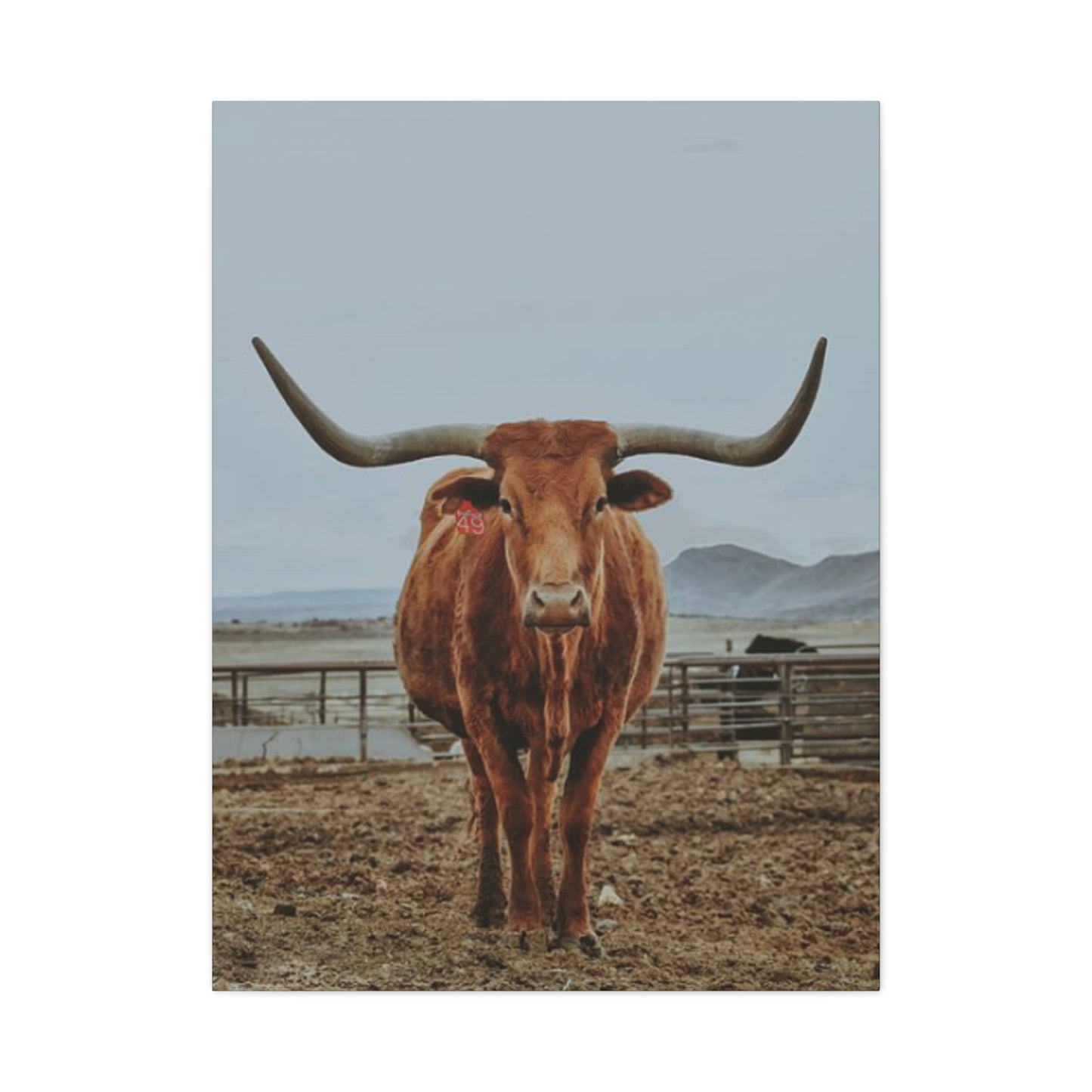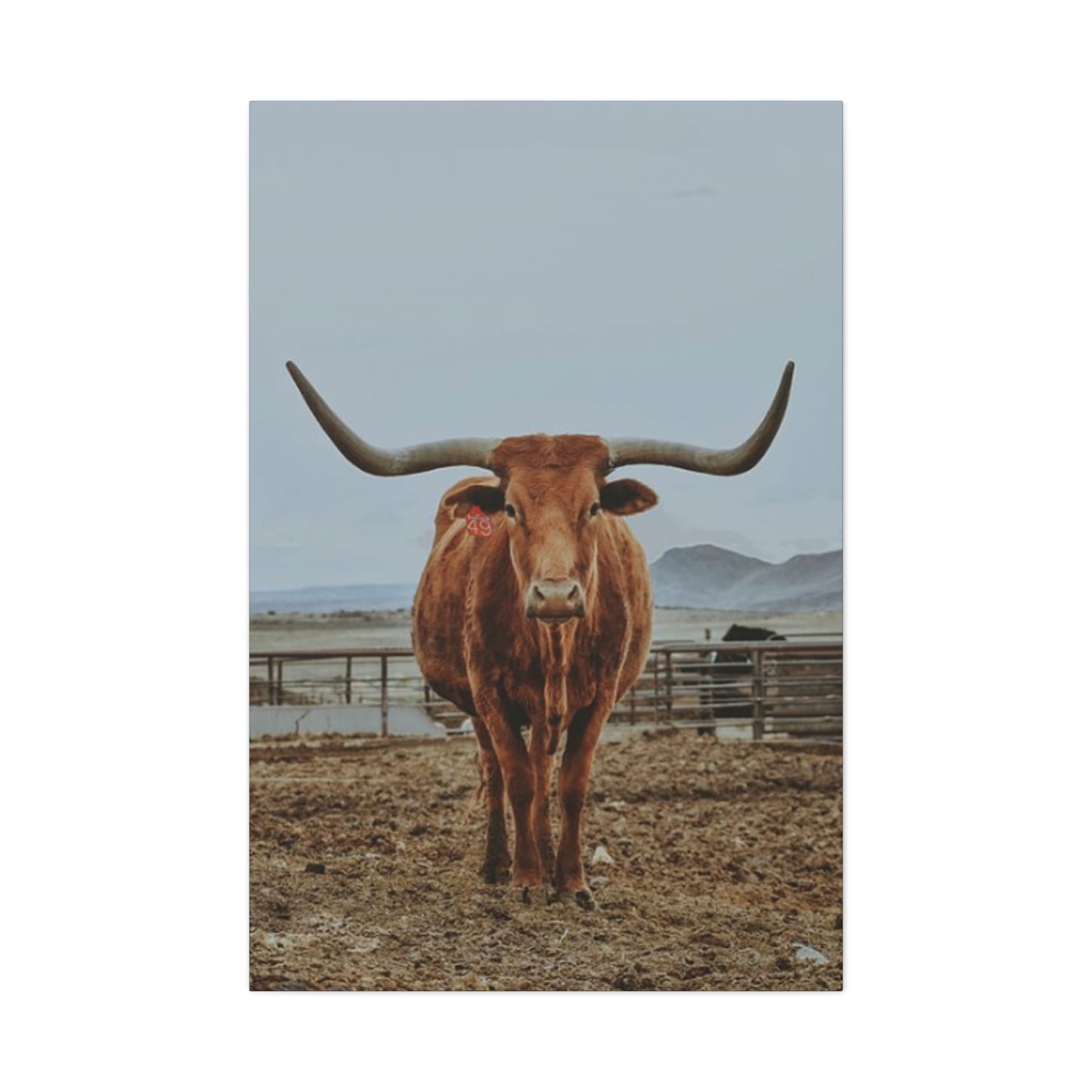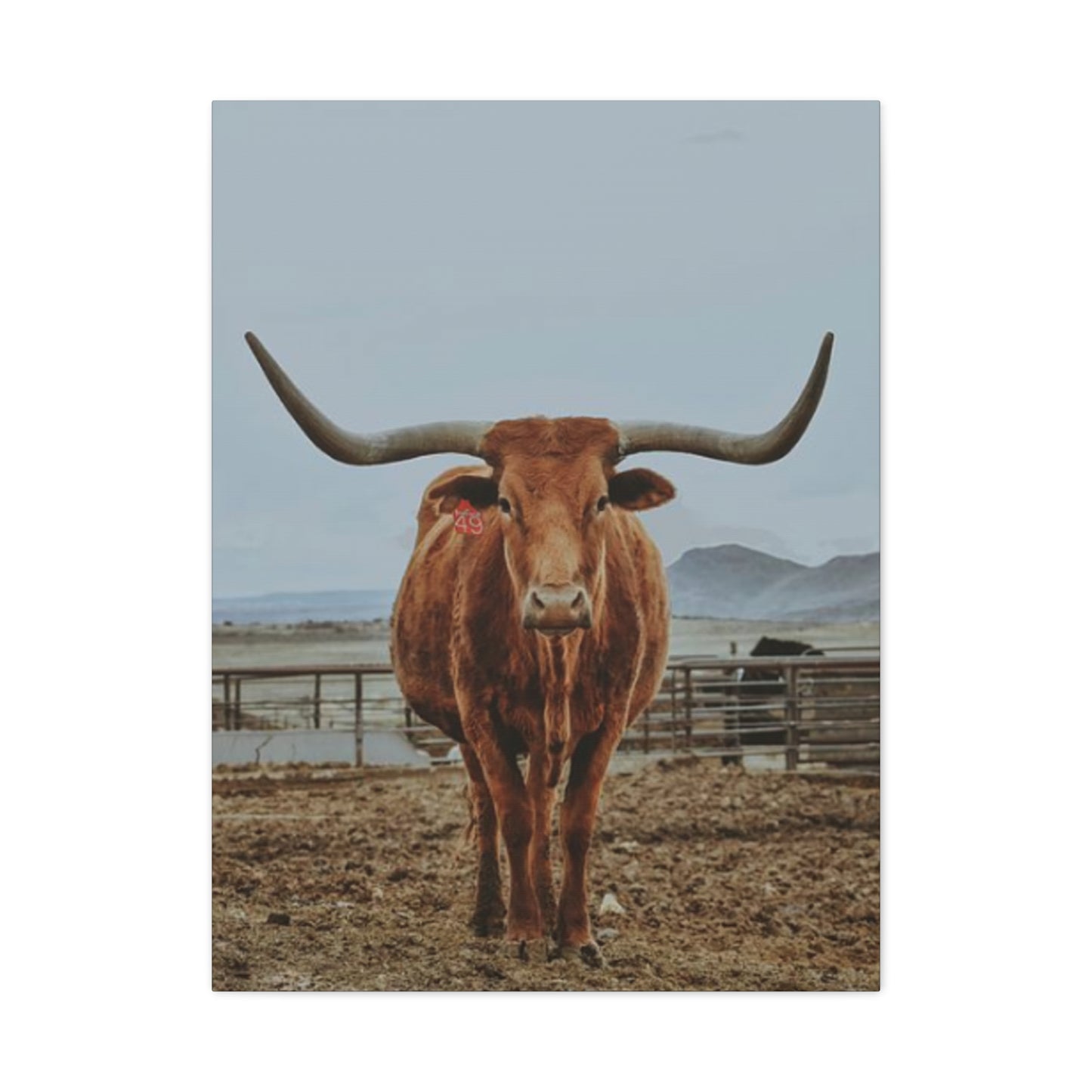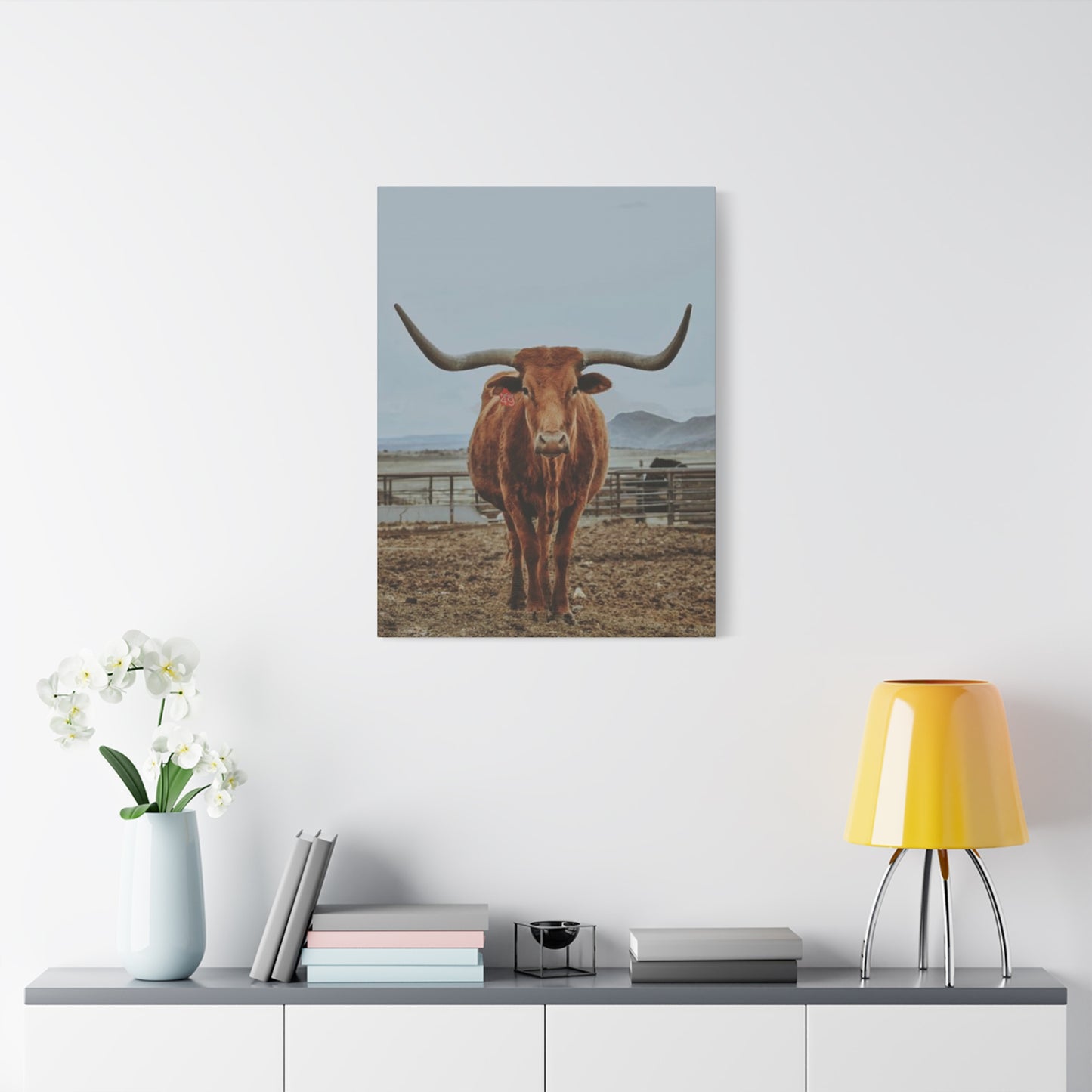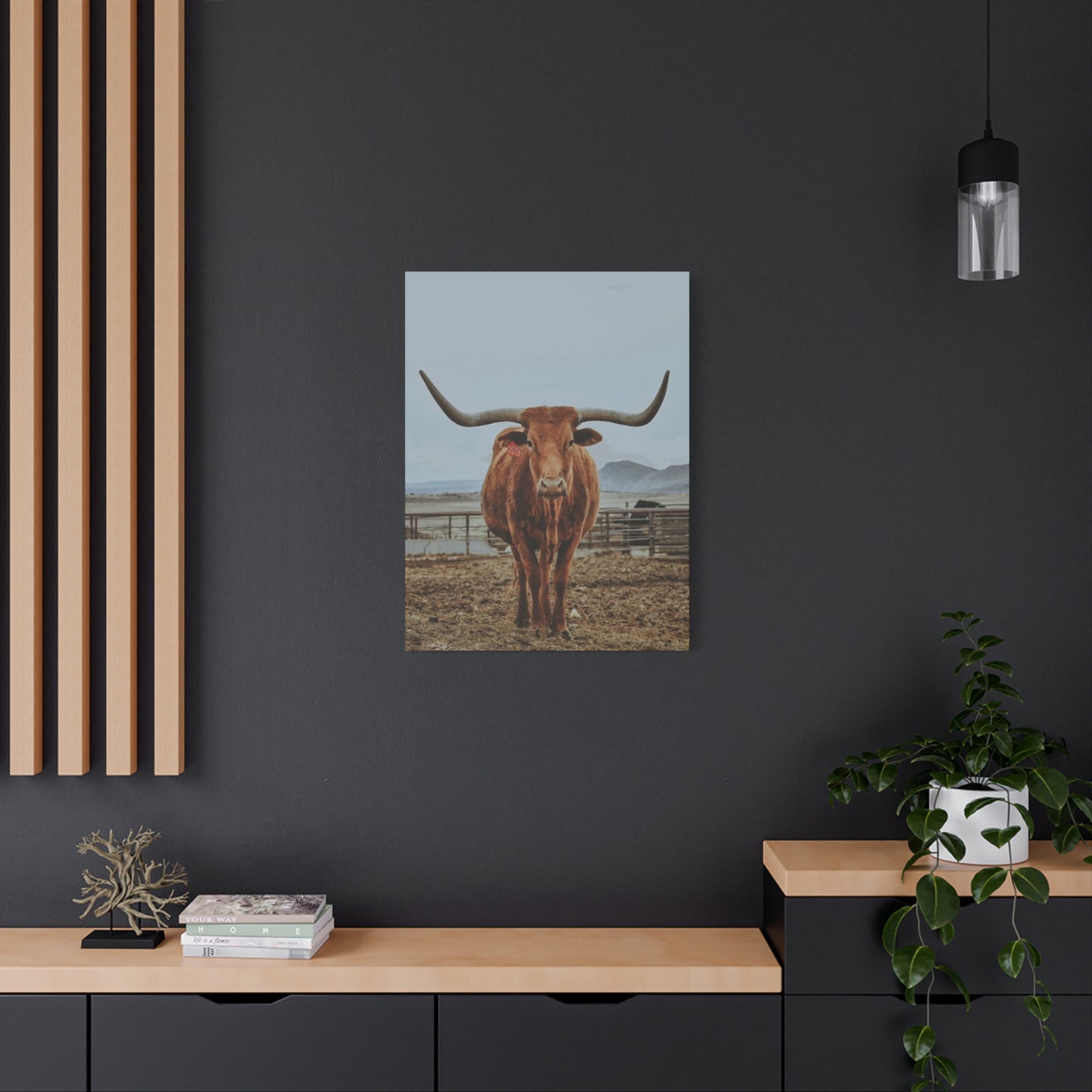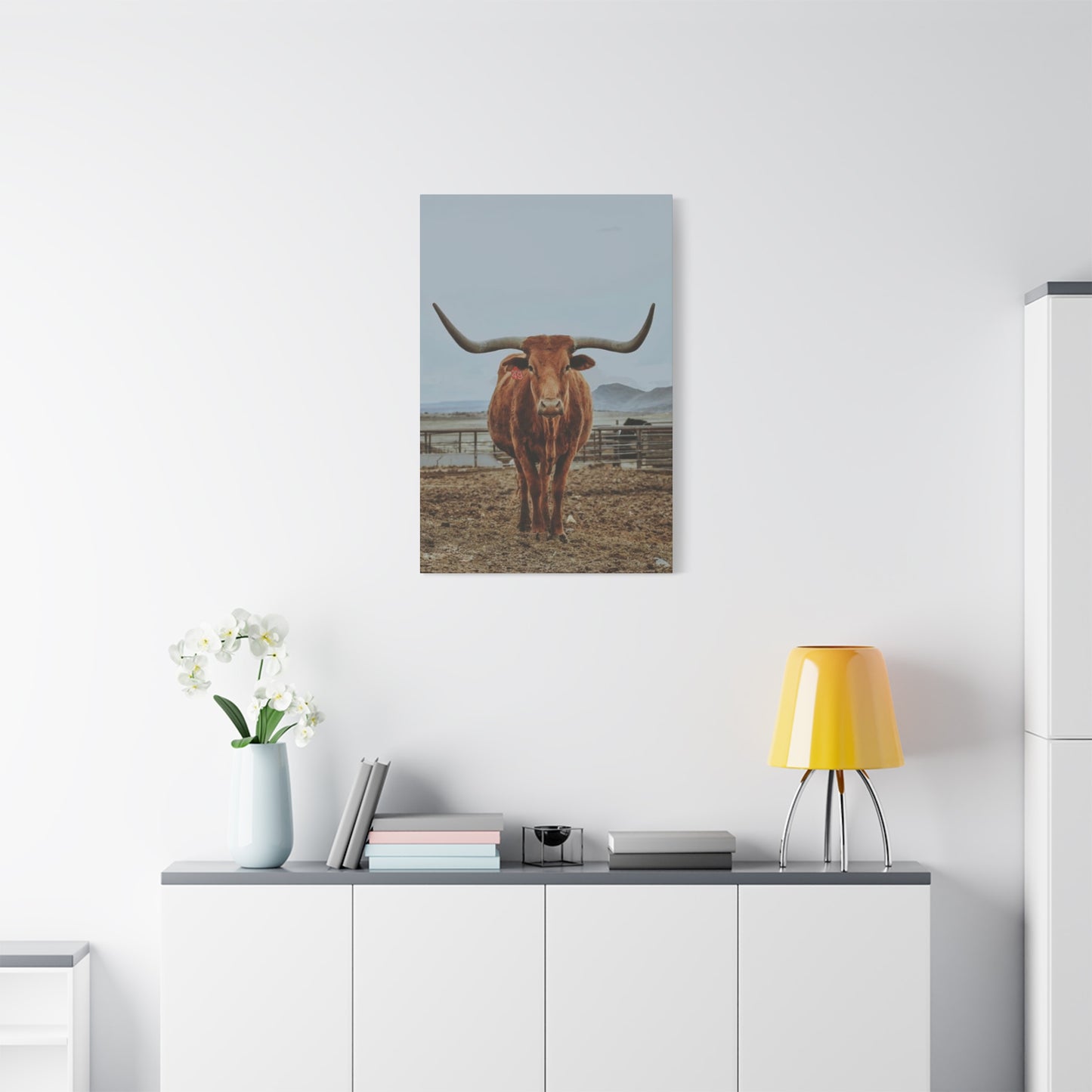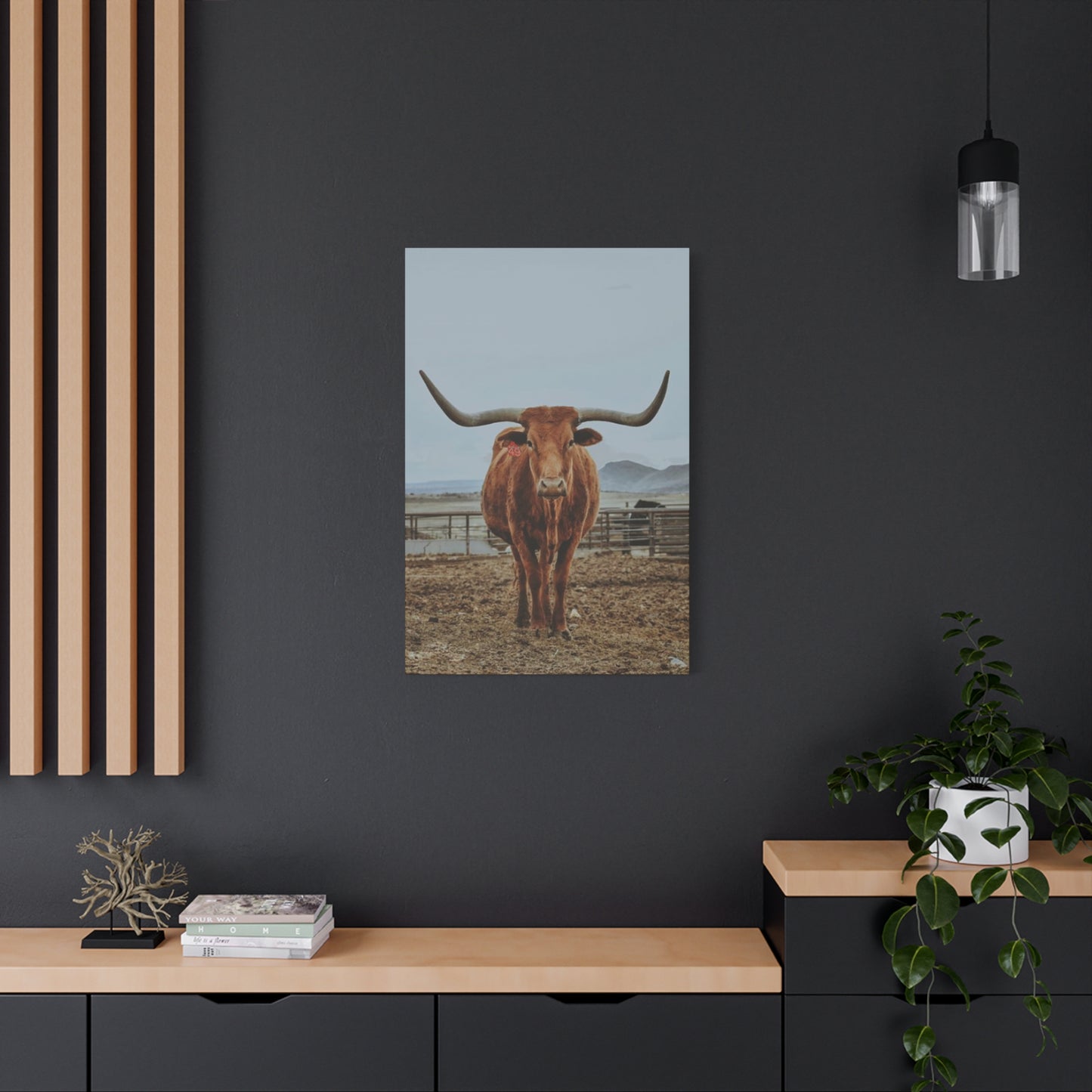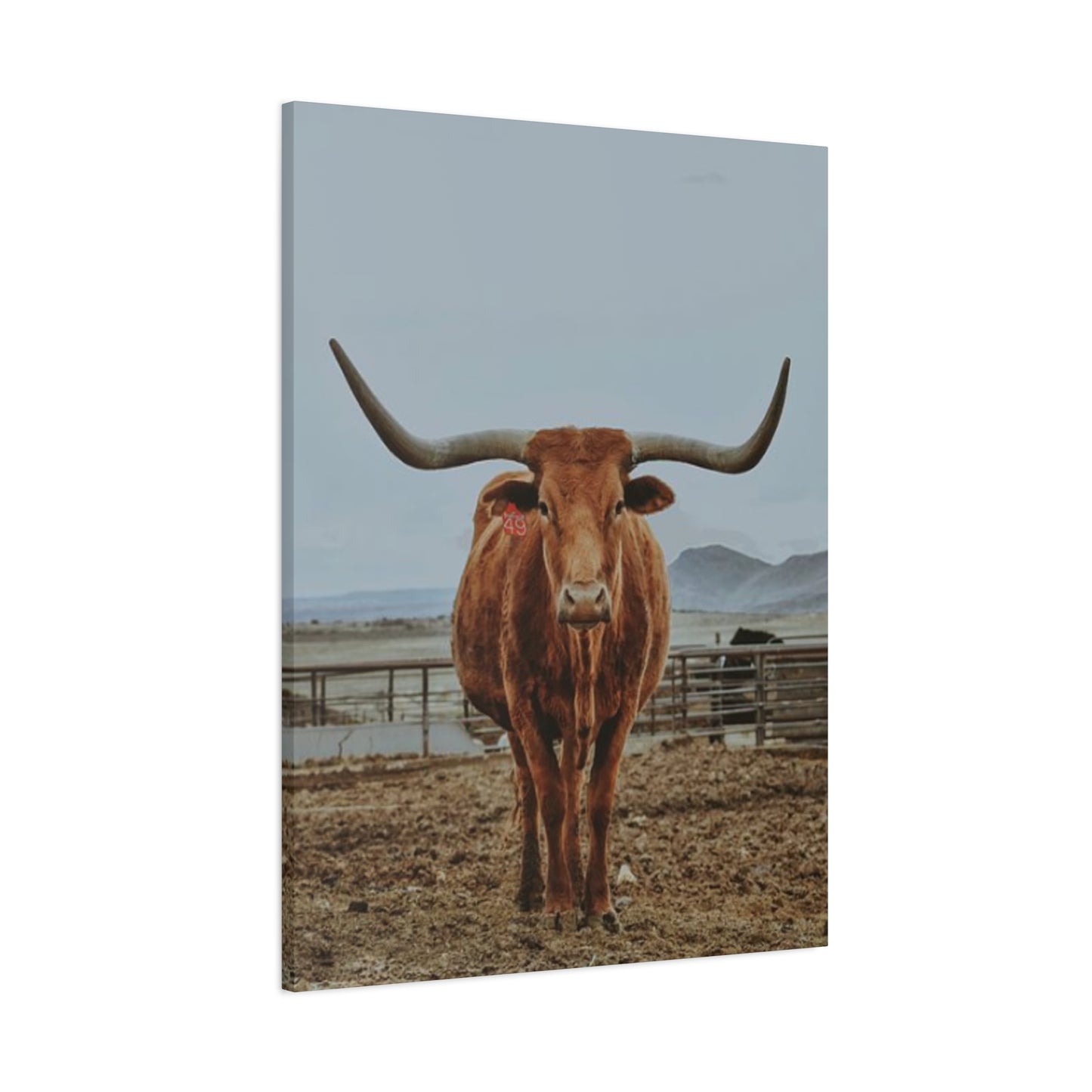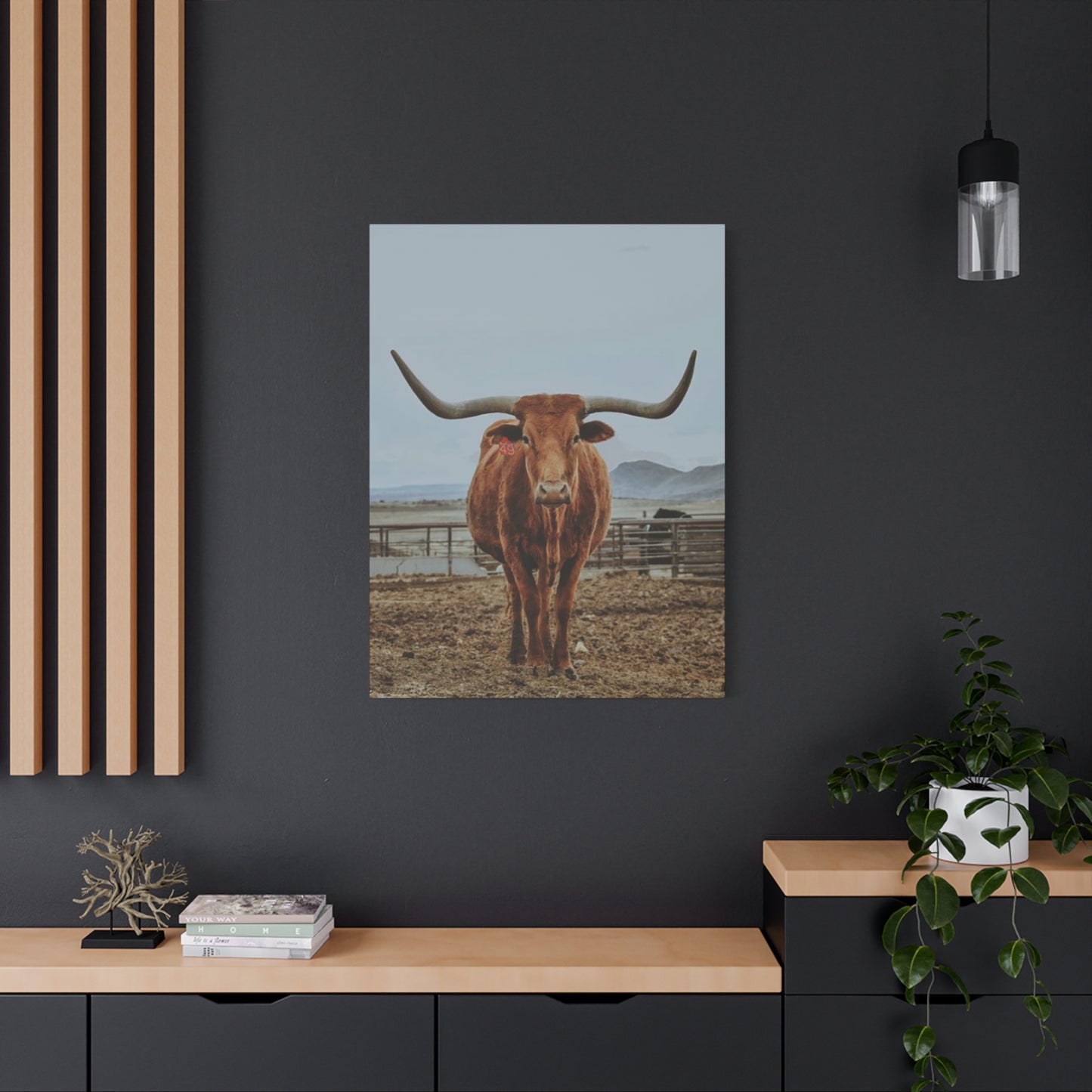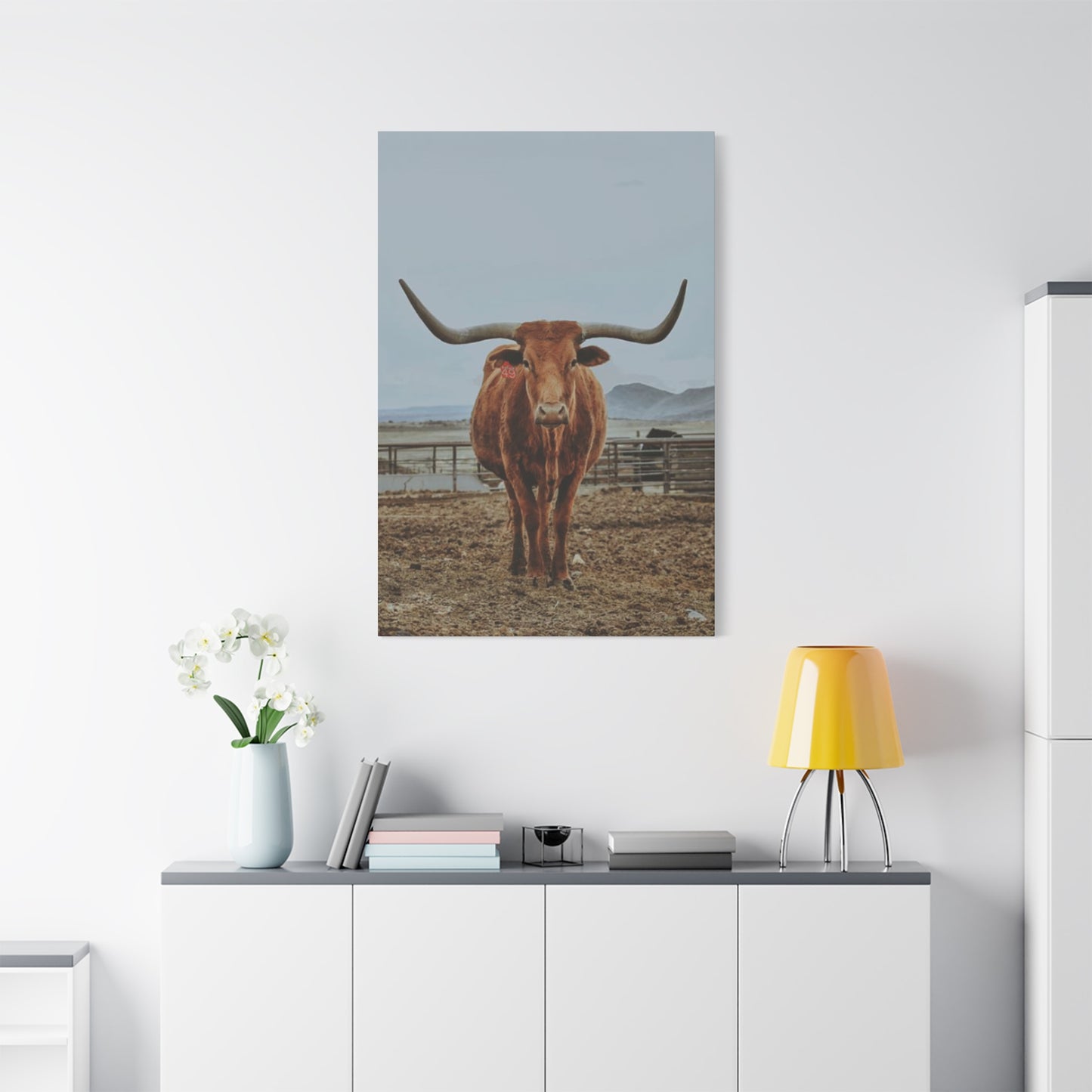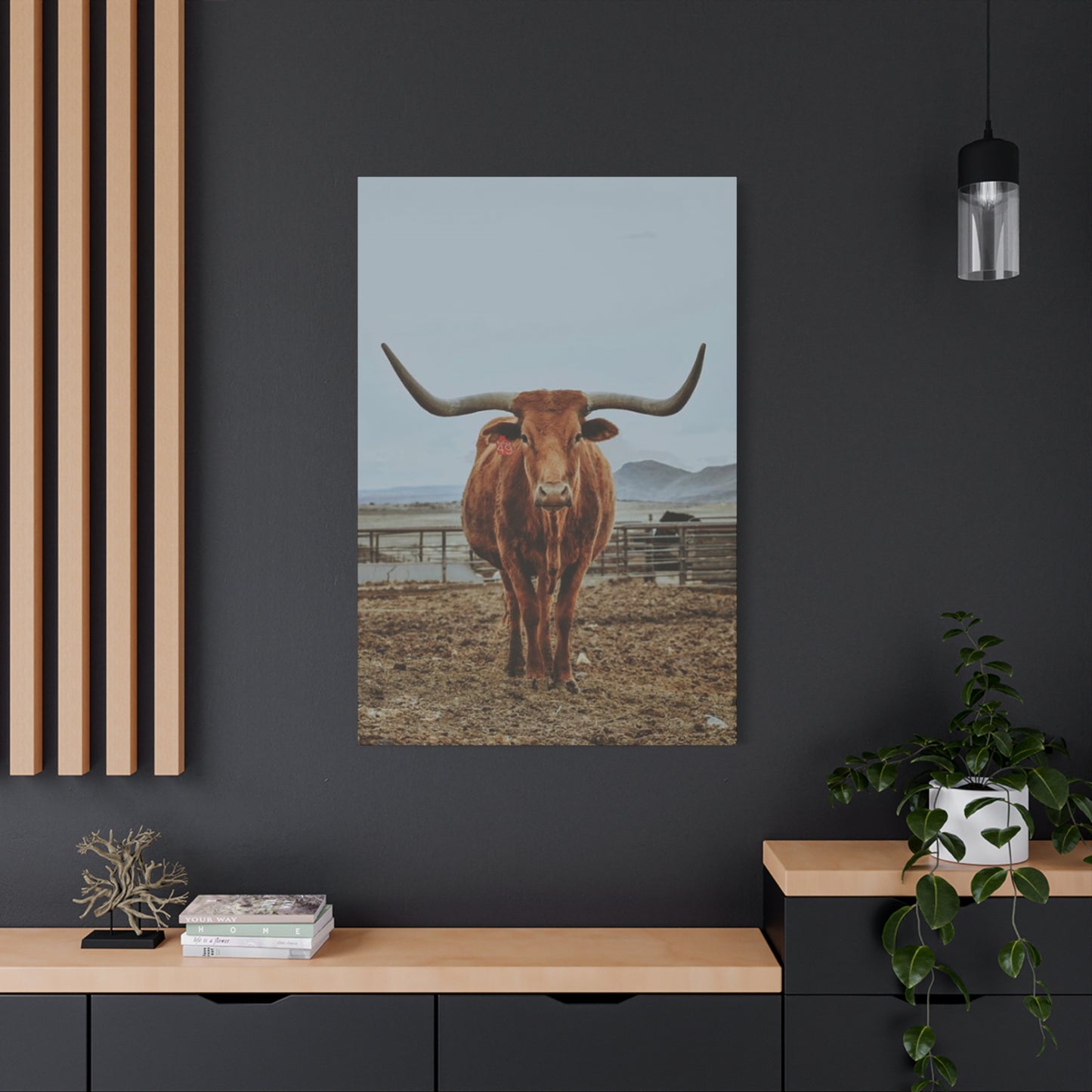Choosing the Right Brown Buffalo Longhorn Wall Art for Your Space: A Style Guide
The allure of the American West has captivated homeowners, interior designers, and wildlife enthusiasts for generations. Among the most powerful symbols of this rugged frontier are the magnificent creatures that once roamed the plains in thunderous herds. Today, these impressive animals continue to inspire artistic creations that transform residential and commercial spaces into havens of natural beauty and western heritage. This comprehensive exploration delves into the world of canvas artwork featuring these iconic prairie dwellers, examining their aesthetic appeal, cultural significance, decorating possibilities, and the profound impact they can have on interior environments.
Creating Impactful Office Environments with Wildlife Art
Professional spaces benefit tremendously from carefully selected artwork that projects desired qualities. Imagery of these powerful animals conveys strength, determination, and grounded stability—attributes that serve businesses well across industries. Whether in corporate offices, home workspaces, or client-facing reception areas, such artwork makes statements about organizational values and professional identity.
The psychological impact of nature imagery in work environments has been studied extensively. Research consistently shows that employees working in spaces with natural elements report higher satisfaction, reduced stress, and improved focus. Even viewed representations of nature provide measurable benefits, making wildlife artwork a practical investment in workplace wellbeing rather than mere decoration.
Office artwork should align with brand identity and company culture. Organizations emphasizing tradition, reliability, and solid foundations find that imagery of these enduring animals reinforces those messages. The historical significance of these creatures and their association with American heritage appeals to businesses wanting to emphasize their roots or connection to traditional values while maintaining contemporary relevance.
Scale and placement in office settings require different considerations than residential spaces. Conference rooms benefit from larger pieces that command attention and provide focal points during meetings. Individual offices might incorporate medium-sized works that personalize spaces without overwhelming them. Reception areas can accommodate dramatic large-format pieces that make strong first impressions on visitors and clients.
The professional appearance of gallery-wrapped canvas suits business environments perfectly. The clean, frameless edges create a polished look that feels current and sophisticated. Alternatively, adding sleek modern frames in metal or dark wood finishes can enhance formality for more traditional professional settings. Either approach maintains the dignified presence appropriate for business contexts.
Rustic Design Integration and Farmhouse Aesthetics
The farmhouse design movement embraces natural materials, vintage elements, and connections to agricultural heritage. Artwork featuring these iconic animals fits seamlessly into this aesthetic, complementing other rustic design elements while adding visual interest and character. The earthy tones and organic subject matter align perfectly with farmhouse design principles that celebrate simplicity and authenticity.
Rustic interiors benefit from the textural contrast canvas artwork provides. Surrounded by reclaimed wood, wrought iron, and natural fibers, the smooth canvas surface offers variation that prevents spaces from feeling monotonous. The artistic quality elevates rustic design beyond mere country kitsch, adding sophistication that keeps the style feeling fresh and intentional rather than clichéd.
Combining wildlife artwork with other western-themed elements creates layered design that tells cohesive stories. Vintage ranch tools, leather furnishings, Native American-inspired textiles, and natural wood accents all complement these animal subjects beautifully. However, restraint prevents spaces from becoming thematic to the point of appearing like staged sets rather than authentic homes.
The substantial presence of these animals makes them ideal subjects for the larger-scale artwork that rustic spaces often accommodate well. Expansive walls in converted barns, great rooms with vaulted ceilings, or open-concept living areas can handle dramatic oversized pieces that would overwhelm more modest spaces. This scale allows the artwork to hold its own against the architectural features typical of rustic design.
Patina and weathered finishes popular in farmhouse design find echoes in quality wildlife artwork that captures realistic details. The rough texture of horns, the weathered appearance of older animals, and the wild, untamed quality of the subjects themselves mirror the aged, authentic aesthetic that makes rustic design appealing. This alignment creates visual harmony that feels organic rather than forced.
Large-Format Artwork as Architectural Elements
Oversized canvas pieces function as more than decoration—they become architectural features that shape how spaces are perceived and experienced. A commanding presentation of one of these magnificent animals can define a room's purpose and character as effectively as paint color or furniture selection. The dramatic presence of large-format artwork creates immediate impact that smaller pieces cannot achieve.
The visual weight of substantial artwork must be balanced within the overall space. Surrounding walls should remain relatively uncluttered to allow the featured piece to command attention without creating visual chaos. This negative space enhances rather than diminishes the artwork's impact, giving the eye resting places that make the focal piece more powerful by contrast.
Architectural features should be considered when selecting placement for large works. High ceilings accommodate vertical orientations that draw the eye upward, emphasizing room height. Horizontal pieces work well above long furniture arrangements or in spaces with lower ceilings where vertical orientation might feel cramped. Consideration of existing architectural elements like windows, doorways, and built-in features ensures artwork enhances rather than fights against the room's structure.
Large-format pieces require secure mounting systems capable of supporting their weight safely. Professional installation may be advisable for particularly heavy or valuable works. Proper mounting not only ensures safety but also allows precise positioning that maximizes visual impact. Taking time to position artwork correctly prevents the need for repeated adjustments that can damage walls.
The investment in a quality large-format piece often proves more satisfying than purchasing multiple smaller works. A single stunning image creates a bold statement that multiple lesser pieces cannot replicate. This approach also simplifies decorating decisions, as one strong focal point provides clear direction for coordinating other design elements throughout the space.
Wildlife Photography Versus Artistic Interpretations
Canvas artwork featuring these animals ranges from photorealistic images to stylized artistic interpretations. Understanding the differences helps in selecting pieces that align with personal preferences and decorating objectives. Photographic representations capture authentic details and natural behaviors, appealing to those who value accuracy and realism. These pieces often feature animals in their natural habitats, providing windows into wild landscapes and authentic wildlife moments.
The technical excellence of wildlife photography has advanced dramatically with improved camera technology and the dedication of skilled photographers who spend countless hours in the field. The best photographic pieces capture not just physical appearance but personality and character, revealing the intelligence and emotional depth of these impressive creatures. Candid moments showing interaction between animals, responses to environmental conditions, or display behaviors add narrative interest that engages viewers.
Artistic interpretations offer different appeals, emphasizing aesthetic qualities over documentary accuracy. Paintings, digital illustrations, and stylized renderings might exaggerate certain features, employ unusual color palettes, or incorporate abstract elements that create distinctive visual effects. These approaches allow artists to convey emotional responses to their subjects or emphasize particular qualities like power, grace, or nobility.
Some artwork blends photographic bases with artistic enhancements, creating hybrid approaches that combine realistic detail with creative interpretation. Digital manipulation allows artists to adjust colors, enhance contrasts, add atmospheric effects, or composite multiple images into single dramatic scenes. These techniques can produce striking results that would be impossible to capture through pure photography.
Personal preference should guide selection between photographic and artistic approaches. Those drawn to authenticity and natural beauty often prefer straightforward photographic presentations. Individuals attracted to bold artistic statements or unique interpretations might gravitate toward more stylized works. Either choice can succeed beautifully when the artwork quality is high and the piece resonates with the viewer.
The Role of Horns in Visual Composition and Symbolism
The distinctive horns that characterize certain species of prairie animals provide powerful visual elements that artists and photographers emphasize in their compositions. These impressive appendages create dramatic silhouettes and add graphic strength to images. The sweeping curves draw the eye through compositions, creating movement and directing attention according to artistic intent.
Horn configuration varies among individuals, with some displaying particularly impressive spreads or unusual curves. These variations add character and individuality to artwork, preventing images from appearing generic or interchangeable. Photographers and artists often seek out animals with particularly striking horn formations, recognizing their enhanced visual appeal and dramatic potential.
The symbolism associated with horns adds layers of meaning to artwork featuring them prominently. Throughout history and across cultures, horns have represented power, virility, protection, and connection to divine forces. This symbolic weight enriches artwork beyond mere representation, allowing viewers to engage with deeper meanings and personal associations.
Composition techniques that highlight horns create strong visual statements. Silhouettes against dramatic skies emphasize horn shapes while minimizing distracting details. Close-up perspectives that fill the frame with horn curves create abstract qualities that showcase form and line. Environmental shots showing animals using horns in natural behaviors add narrative elements that engage viewers more fully.
Lighting dramatically affects how horns appear in imagery. Backlighting creates glowing edges and emphasizes the translucent quality of horn material. Side lighting reveals texture and surface details while creating dimensional modeling through shadow and highlight. Understanding how light interacts with these structures allows appreciation of the technical skill required to capture compelling images.
Herd Dynamics and Multiple-Animal Compositions
While individual animal portraits possess undeniable power, compositions showing multiple animals offer different aesthetic and emotional appeals. Herd scenes convey social connections, environmental context, and the historical reality of how these animals naturally exist. The interaction between multiple subjects adds narrative complexity and visual interest that single-subject pieces cannot provide.
Compositional challenges in multi-animal artwork require skill to resolve successfully. Arranging multiple large subjects within a frame without creating confusion or visual clutter demands careful attention to spacing, overlap, and focal hierarchy. The most successful pieces guide the viewer's eye through the composition, creating clear paths that allow full appreciation of all elements without overwhelming perception.
The social behavior visible in herd imagery adds emotional dimensions to artwork. Protective mothers with young, dominant males asserting authority, or peaceful grazing groups all tell stories that resonate with viewers. These glimpses into animal society create connections between human and animal experience, fostering empathy and appreciation for these creatures as sentient beings rather than mere decorative subjects.
Environmental context becomes more apparent in herd compositions, as multiple animals suggest broader landscape views. The sweep of prairie grasslands, the vastness of open ranges, or the encroachment of wilderness boundaries all become part of the narrative when showing animals in groups. This expanded context enriches the artwork's ability to transport viewers beyond their immediate surroundings into wild spaces.
Scale relationships within multi-animal compositions create depth and spatial interest. Animals positioned at varying distances from the viewer establish foreground, middle ground, and background zones that give images dimensional quality. This recession into pictorial space makes flat canvas surfaces feel more expansive and engaging.
Seasonal Variations and Environmental Storytelling
The changing seasons dramatically affect how these prairie animals appear and behave, providing artists and photographers with varied opportunities for compelling imagery. Winter scenes showing animals against snow-covered landscapes create high-contrast compositions with stark beauty. The animals' dark coats stand out powerfully against white backgrounds, emphasizing their forms and creating graphic impact.
Summer imagery typically features lush green backgrounds and animals in peak condition with glossy coats. The warmth of these scenes appeals to those seeking cheerful, life-affirming artwork. Golden hour lighting during summer months creates particularly beautiful effects, bathing subjects in warm glows that enhance their natural coloring and create romantic, nostalgic moods.
Autumn brings rich color palettes as prairie grasses turn golden and amber. These warm tones complement the animals' brown coats beautifully while adding visual variety. The transitional quality of autumn scenes, suggesting preparation for coming winter, adds temporal awareness that enriches these images with subtle emotional undertones.
Spring imagery often includes young animals and emphasizes themes of renewal and new life. These hopeful, forward-looking compositions appeal to those who find meaning in nature's cycles and the continuity of life. The tender interactions between mothers and offspring provide touching moments that create emotional connections with viewers.
Weather conditions add drama and storytelling potential to wildlife scenes. Storm clouds gathering on distant horizons create tension and atmospheric interest. Morning mists softening landscape details add mystery and ethereal beauty. Rain-slicked coats and dramatic lighting during weather events produce dynamic images that capture nature's power and unpredictability.
Portrait-Style Compositions and Personality Expression
Close-up portrait compositions focus attention on individual animals, allowing viewers to appreciate details often missed in wider environmental views. The weathered texture of an aging animal's face, the alert intelligence in eyes, or the powerful musculature of neck and shoulders all become apparent in tight framings. These intimate perspectives foster emotional connections between viewers and subjects.
The challenge in animal portraiture lies in capturing personality and character rather than mere physical documentation. The most compelling portraits reveal something of the individual animal's nature—whether calm dignity, fierce independence, or gentle curiosity. Skilled photographers wait for moments when animals display expressions or postures that convey these qualities, exercising patience to capture definitive images.
Eye contact creates particularly powerful effects in portrait compositions. When an animal looks directly toward the camera, viewers experience the illusion of mutual recognition and acknowledgment. This direct gaze creates immediacy and emotional intensity that draws viewers into deeper engagement with the image.
The decision of how much of the animal to include in portrait framings affects impact and message. Extreme close-ups focusing on faces create intimacy but sacrifice context. Slightly wider framings that include horn structures and some shoulder musculature maintain intimacy while showcasing the animals' impressive physical attributes. Each approach serves different artistic purposes and appeals to different viewer preferences.
Background treatment in portrait compositions requires careful consideration. Simplified or blurred backgrounds prevent distraction from the primary subject while still suggesting environmental context. The balance between subject clarity and contextual information determines whether portraits feel like studio constructions or moments captured in natural settings.
Gender Differences and Their Representation in Artwork
Male and female specimens of these species display notable physical differences that affect their representation in artwork. Males typically feature more massive horn development, heavier muscular structure, and more imposing overall presence. These characteristics make male subjects popular choices for artwork emphasizing power and dominance. The visual drama of fully mature males appeals to those seeking bold statements for their spaces.
Female animals possess their own distinctive appeal, often appearing more graceful and refined than their masculine counterparts. While smaller in stature, females display alertness and nurturing qualities that create different emotional responses. Artwork featuring females often emphasizes their role as mothers and herd stabilizers, appealing to viewers who connect with these gentler narratives.
Compositions showing both sexes together tell stories about natural social structures and gender dynamics. These pieces can explore themes of partnership, protection, and complementary roles within animal societies. The contrast between masculine power and feminine grace within single compositions creates visual interest and balanced energy.
Juvenile animals introduce additional dimensions to gender representation. Young animals possess endearing qualities regardless of sex, appearing vulnerable yet spirited. Their smaller size and more delicate features create different aesthetic effects than adult subjects. Artwork including young animals often appeals to viewers' nurturing instincts and appreciation for new life.
The choice of whether to feature male, female, or mixed groups affects the message and mood of artwork. Understanding these differences allows viewers to select pieces that resonate with their values and the qualities they wish to emphasize in their spaces. All expressions have validity and appeal to different audiences and purposes.
Conservation Messages and Environmental Awareness
Contemporary wildlife artwork often carries subtle or explicit conservation messages. Images of these animals in pristine habitats remind viewers of what remains worth protecting. The beauty and majesty these pieces celebrate create emotional investments in wildlife preservation that abstract environmental arguments alone cannot achieve. This educational dimension adds purpose beyond decoration to artwork choices.
The dramatic population recovery these species have experienced demonstrates that conservation efforts can succeed when society commits to them. Artwork celebrating these animals implicitly honors this success while reminding viewers that continued vigilance remains necessary. This hopeful narrative appeals to those seeking positive environmental stories amid concerning global trends.
Habitat preservation represents the most critical factor in wildlife conservation. Artwork that includes substantial environmental detail illustrates the connection between animals and the landscapes they require. These pieces educate viewers about ecosystem relationships and the importance of maintaining wild spaces. The implicit message that protecting habitat protects species resonates with environmentally conscious audiences.
Some artists explicitly address conservation themes through their work, creating pieces that confront viewers with the consequences of environmental degradation. While such overtly political artwork serves important purposes, many prefer subtler approaches that celebrate natural beauty while implicitly making cases for preservation. Both approaches have roles in promoting environmental awareness through visual media.
Purchasing wildlife artwork often supports conservation directly when artists donate portions of proceeds to preservation organizations. Researching artists' conservation commitments allows conscientious consumers to align decorating choices with environmental values. This alignment creates additional meaning and satisfaction in artwork ownership beyond aesthetic appreciation.
Matching Artwork to Architectural Styles
Traditional architecture with formal proportions and classical elements accommodates wildlife artwork when pieces are properly framed and positioned. Ornate wood or gilded frames can bridge the informal subject matter with formal surroundings, creating interesting tension between refinement and wildness. The key lies in respecting the architectural context while introducing natural elements that soften formality.
Contemporary architecture's clean lines and minimalist aesthetics pair beautifully with frameless canvas presentations. The simplified aesthetic of gallery-wrapped canvas aligns with modern design principles while introducing organic subject matter that prevents spaces from feeling sterile. The contrast between geometric architectural elements and the curves and textures of animal forms creates dynamic visual interest.
Rustic architectural features like exposed beams, stone fireplaces, and rough-hewn wood naturally complement this artwork style. The materials and textures present in such spaces echo the natural world depicted in the images, creating cohesive environments that celebrate traditional building methods and natural beauty. These settings allow wildlife artwork to feel completely at home rather than imposed.
Transitional architecture blending traditional and contemporary elements offers flexibility in artwork presentation. The mixed nature of these spaces allows wildlife imagery to serve as either traditional focal points or modern accents depending on framing, sizing, and placement choices. This versatility makes such spaces ideal testing grounds for creative decorating approaches.
Regional architectural vernacular influences how wildlife artwork is perceived and received. In western states where these animals remain part of the living landscape, such artwork feels especially appropriate and authentic. In other regions, the same pieces might read as aspirational or romantic, evoking distant places and different ways of life. Neither response is wrong—they simply reflect different relationships with the subject matter.
The Intersection of Western Heritage and Modern Design
Western design elements maintain surprising relevance in contemporary interiors when thoughtfully incorporated. The key lies in editing and refining traditional western motifs to align with current aesthetic preferences. Wildlife artwork serves this purpose perfectly, carrying authentic western heritage while possessing timeless visual appeal that transcends passing trends.
Modern interpretations of western style emphasize quality materials, craftsmanship, and connection to landscape without veering into caricature. Artwork featuring these prairie animals supports this refined approach, celebrating western iconography while avoiding the clichés that make traditional western design feel dated or novelty-focused. This sophisticated balance attracts those who appreciate western heritage without wanting their homes to resemble movie sets.
The raw authenticity of these animals resonates with current design movements emphasizing genuine materials and honest expression. In an era of mass production and digital simulation, images of real animals in actual landscapes provide anchoring authenticity. This genuineness creates psychological comfort and satisfaction that manufactured or artificial elements cannot replicate.
Color palettes drawn from western landscapes—sage greens, terracotta oranges, turquoise blues, and of course the earthy browns of the animals themselves—translate beautifully into contemporary interiors. These colors feel both rooted in tradition and completely current, allowing seamless integration of western-inspired artwork into various design contexts.
The storytelling aspect of western heritage finds expression through carefully curated artwork selections. Rather than overwhelming spaces with western motifs, allowing a few choice pieces to represent these themes creates sophistication and intentionality. A stunning canvas of one of these majestic animals can carry the entire western theme for a room, allowing other elements to pursue different directions while maintaining overall cohesion.
Texture and Dimensionality in Canvas Presentations
The physical texture of canvas material contributes significantly to artwork's visual appeal and perceived value. The woven texture creates subtle surface variation that catches light differently depending on viewing angle. This interactive quality means the artwork appears slightly different as viewers move through spaces or as lighting conditions change throughout the day, maintaining ongoing visual interest.
Modern printing techniques can enhance canvas texture by applying ink in varying thicknesses that create relief effects mimicking brushstrokes. These dimensional variations add handcrafted qualities to printed pieces, blurring lines between reproductions and original artwork. The resulting pieces possess character and uniqueness that standard flat prints cannot match.
The wrapped edges of gallery-style canvas presentations extend imagery around the sides of the stretcher frames. This continuation creates three-dimensional objects rather than flat pictures, making the artwork feel more substantial and complete. The all-around imagery also eliminates visual breaks that traditional frames create between artwork and surrounding space.
Lighting designed to emphasize texture enhances canvas artwork's dimensional qualities. Grazing light from picture lights or strategically placed spots creates shadows within the canvas texture that enhance visual interest. This interplay between light and material adds life to static images, creating subtle motion as lighting shifts throughout the day.
The substantial physical presence of quality canvas artwork satisfies in ways that lighter materials cannot. The weight and solidity create impressions of value and permanence. This tangible quality makes canvas presentations feel more like investments in lasting beauty rather than temporary decorative solutions.
Creating Gallery Walls with Coordinated Wildlife Imagery
Multiple related pieces arranged together create gallery walls that tell expanded visual stories. Coordinating artwork through consistent subject matter, color palettes, or stylistic approaches creates unified presentations greater than the sum of individual pieces. Gallery arrangements allow expression of complex ideas and relationships that single images cannot convey.
Planning gallery layouts requires attention to spatial relationships between pieces. Consistent spacing between frames creates order and unity. Varying sizes can add visual interest while maintaining cohesion through subject or style consistency. Testing arrangements by cutting paper templates in corresponding sizes and temporarily affixing them to walls allows experimentation before committing to final placement.
Theme development in gallery arrangements might follow various organizational principles. Chronological progressions showing seasonal changes create narrative flow. Compositional variety from close portraits to expansive landscape views provides visual rhythm. Color progression from warm to cool tones generates subtle movement across the arrangement. Any organizing principle works as long as it creates coherence rather than randomness.
The surrounding wall treatment significantly impacts gallery arrangements' effectiveness. Neutral wall colors allow artwork to command attention without color competition. Texture in wall surfaces can add interest but should remain subtle enough not to fight with the artwork itself. The goal is creating backdrop that enhances rather than distracts from the featured pieces.
Gallery arrangements require more planning than single large pieces but offer unique rewards. The ability to show multiple perspectives and moments creates richness that single images cannot achieve. The collection aspect also allows personal curation expressing individual taste and vision, making the overall presentation feel more personal and meaningful.
Artwork Selection for Different Room Functions
Bedroom artwork should promote relaxation and peaceful rest. Calmer wildlife imagery showing animals at rest or grazing peacefully suits this purpose better than action shots or dramatic storm scenes. The colors should coordinate with the room's overall palette while avoiding stimulating hues that might interfere with sleep. Softer, more subdued presentations create appropriate moods for private spaces dedicated to restoration.
Dining areas accommodate artwork that stimulates conversation without distracting from social interaction. Interesting wildlife scenes with narrative elements provide discussion topics while maintaining visual appeal. The communal nature of dining spaces makes them appropriate for pieces showing herd dynamics or family groups, subtly reinforcing themes of gathering and community.
Home offices benefit from artwork that inspires without distracting from work focus. Images of these powerful animals can provide motivational reminders of strength and determination during challenging work moments. However, busy or chaotic compositions might prove distracting. Clean, strong images with clear focal points work best in spaces requiring concentration.
Entryways and foyers make strong first impressions on visitors and set tones for entire homes. Bold wildlife artwork in these transitional spaces makes immediate statements about homeowner interests and aesthetic preferences. Substantial pieces suitable for the typically limited viewing time in these pass-through spaces work better than detailed works requiring extended contemplation.
Living areas serve multiple functions and accommodate a wide range of artwork types. The flexibility of these gathering spaces allows for pieces that might be too bold or large for more specialized rooms. Since living areas typically receive the most viewing time, investing in higher-quality pieces that reward repeated viewing makes particular sense in these locations.
The Impact of Scale on Viewer Experience
Monumental-scale artwork creates immersive experiences that transport viewers beyond their immediate surroundings. A life-sized or larger-than-life presentation of one of these impressive animals generates visceral responses that smaller pieces cannot achieve. The physical presence of such substantial artwork makes it impossible to ignore, commanding attention and creating memorable impressions.
Medium-sized pieces offer versatility and approachability. They create presence without overwhelming spaces or dominating entire design schemes. These manageable sizes work well in various locations and allow for easier future relocation if decorating preferences evolve. The flexibility makes medium formats particularly practical for those anticipating future moves or design changes.
Smaller works function well as parts of larger arrangements or in intimate spaces where viewing distances remain close. Detail-rich pieces reward close inspection, making smaller formats appropriate for hallways, reading nooks, or personal spaces where viewers spend time in proximity to artwork. The reduced scale also makes these pieces more accessible budget-wise, allowing collection building over time.
Mixing scales within spaces or throughout homes creates visual interest and prevents monotony. Pairing one large statement piece with several smaller complementary works establishes hierarchy while maintaining variety. This varied approach mimics the diversity found in nature, where different elements exist at different scales in balanced relationships.
Viewing distance requirements differ according to scale. Large pieces need sufficient distance for viewers to take in the entire composition comfortably. Small detailed works require closer proximity to appreciate fully. Considering the actual viewing conditions in specific spaces ensures artwork is sized appropriately for its intended location.
The Business of Wildlife Art: Artist Selection and Purchasing
The wildlife art market encompasses vast quality ranges from amateur hobbyists to internationally recognized professionals. Understanding how to evaluate artist skill helps ensure satisfaction with purchased pieces. Technical proficiency in capturing anatomy, movement, and behavior separates accomplished wildlife artists from those with limited understanding of their subjects. Researching artists' backgrounds and training provides insight into their expertise levels.
Artistic vision beyond technical skill distinguishes truly exceptional wildlife artists. The ability to compose compelling images, manipulate light dramatically, and create emotional resonance requires creativity transcending mere documentation. Reviewing artists' bodies of work reveals whether they possess distinctive voices or simply reproduce conventional wildlife imagery. The most satisfying purchases come from artists whose unique perspectives resonate personally.
Pricing in wildlife art reflects multiple factors including artist reputation, production method, edition size, and market demand. Original paintings command premium prices justified by their uniqueness and the time invested in their creation. Limited edition prints offer more accessible pricing while maintaining exclusivity through restricted production numbers. Open edition prints and canvas reproductions provide affordable entry points for those building collections or decorating on budgets.
Understanding reproduction rights and edition authenticity protects buyers from fraud or misrepresentation. Reputable artists and publishers clearly state edition sizes and numbering systems. Certificates of authenticity should accompany limited editions, documenting the piece's place within the edition. Researching sellers' reputations and reading reviews helps ensure legitimate transactions rather than purchases of unauthorized reproductions or misrepresented pieces.
Supporting conservation through art purchases creates additional value beyond decoration. Many wildlife artists donate portions of proceeds to habitat preservation organizations or species recovery programs. Some sellers partner with conservation groups to direct funds toward specific projects. Researching these connections allows alignment of decorating choices with environmental values, creating satisfaction that extends beyond aesthetic appreciation.
Building Collections Versus Individual Statement Pieces
Collection building allows gradual acquisition of related pieces that together tell more complex visual stories than individual works. Themed collections might focus on specific species, habitats, artistic styles, or photographers. The satisfaction of curating personal collections provides ongoing engagement beyond single purchase excitement. This approach suits those who enjoy research, hunting for additions, and developing expertise in particular areas.
Single statement piece strategies concentrate resources on fewer, higher-quality acquisitions. One exceptional large-format work often provides more impact than several lesser pieces of equivalent combined cost. This approach suits minimalist preferences and allows investment in museum-quality pieces that become focal points for entire spaces. The discipline required to save for and select truly special pieces creates particularly satisfying ownership experiences.
Mixed approaches combining occasional major acquisitions with gradual collection building offer flexibility and variety. Starting with a statement piece for primary living areas, then building complementary collections for other spaces balances impact with broad coverage. This pragmatic strategy accommodates various budgets and decorating timelines while preventing decorating paralysis from trying to perfect every decision.
Investment potential represents a consideration for some collectors, though most wildlife art should be purchased for enjoyment rather than profit expectations. Truly exceptional pieces by recognized artists may appreciate over time, but predicting market movements remains difficult. Buying work from emerging artists whose quality suggests future recognition offers the best investment potential, though this requires expertise in evaluating talent and market trends.
The joy of living with artwork that resonates personally outweighs investment considerations for most buyers. Pieces that create daily happiness and enhance living environments provide value regardless of their monetary appreciation. This perspective frees buyers to select based on genuine preference rather than market speculation, typically resulting in more satisfying collections that truly reflect personal taste.
Workplace Wellness and Biophilic Design Principles
Biophilic design principles recognize human needs for connection with nature even in built environments. Research consistently demonstrates that incorporating natural elements into workplaces improves employee satisfaction, productivity, and wellbeing. Wildlife artwork represents accessible implementation of biophilic design principles, bringing nature into spaces where living plants or windows may be impractical.
The stress reduction benefits of nature exposure extend to viewed representations, making wildlife artwork valuable wellness tools. Employees who can take brief mental breaks by gazing at nature scenes report lower stress levels and faster recovery from demanding tasks. The psychological restoration provided by these brief respites contributes to sustained performance and reduced burnout over time.
Open office environments with limited personalization opportunities particularly benefit from curated wildlife artwork. Shared spaces where individual employees cannot add personal items require thoughtful design creating connection and interest. Statement wildlife pieces provide these qualities while maintaining professional atmospheres appropriate for client-facing environments.
Healthcare facilities increasingly incorporate nature imagery based on evidence showing improved patient outcomes in environments with natural elements. Recovery times decrease and pain medication requirements reduce when patients have views or images of nature. Wildlife artwork in waiting rooms, patient rooms, and corridors creates more healing environments while requiring minimal maintenance compared to living plants.
Educational environments from elementary schools through universities benefit from wildlife imagery that stimulates curiosity and learning. Age-appropriate pieces displayed in classrooms, libraries, and common areas expose students to natural subjects and potentially spark interests in biology, ecology, or conservation. The educational value supplements the aesthetic contribution, making wildlife art particularly appropriate for institutional settings focused on learning.
Framing Options and Presentation Styles
While gallery-wrapped canvas offers frameless simplicity, traditional framing provides alternative presentations with distinct advantages. Frames create clear boundaries between artwork and surrounding walls, emphasizing pieces as discrete objects deserving special attention. This separation can be particularly appropriate in formal settings where traditional presentation styles maintain expected dignified atmospheres.
Frame material and style selection significantly impacts overall aesthetic. Natural wood frames complement wildlife subjects beautifully, creating organic unity between frame and content. Dark woods like walnut or espresso create sophisticated, gallery-quality presentations, while lighter woods feel more casual and approachable. Metal frames offer contemporary alternatives that work particularly well in modern environments where wood might feel incongruous.
Frame width and profile affect how substantially framed pieces appear. Narrow frames create minimal visual weight, subtly defining edges without drawing attention from the artwork itself. Wider substantial frames make stronger statements and can help smaller pieces hold their own on large walls. The profile depth creates shadow lines that add dimensional interest to the overall presentation.
Mat boards between artwork and frames add another design layer with practical benefits. Mats create breathing room around images, preventing them from feeling cramped within frames. The additional visual space often makes artwork feel more important and valuable. Mat colors should typically remain neutral to avoid competing with the artwork, though colored mats can create interesting effects when thoughtfully selected.
Float mounting presents canvas without contacting frame edges, creating the appearance of floating within the frame. This contemporary presentation style combines the definition frames provide with the airy quality of frameless pieces. The technique works particularly well for canvas artwork, emphasizing its dimensional nature while providing protective boundaries.
The Influence of Art Movements on Wildlife Representation
Realism remains the dominant approach in wildlife art, emphasizing accurate representation and technical mastery. This tradition values faithful rendering of anatomy, behavior, and habitat detail. The best realist wildlife artists combine technical skill with artistic vision, creating pieces that transcend mere documentation to achieve genuine artistry. This approach appeals to those valuing accuracy and natural beauty.
Impressionist techniques applied to wildlife subjects create atmospheric interpretations emphasizing mood and light quality over precise detail. Loose brushwork and heightened color create emotional responses different from realistic rendering. These pieces work particularly well in spaces where softer, more romantic aesthetics prevail. The approach demonstrates that wildlife art need not be literal to effectively convey subjects' essence.
Contemporary abstract approaches reduce wildlife subjects to essential forms and colors, creating interpretive rather than representational art. These pieces appeal to modern sensibilities valuing design and composition over subject documentation. While less common in wildlife art than representational styles, abstract treatments offer unique options for spaces where traditional wildlife imagery might feel inappropriate or expected.
Expressionist wildlife art uses distortion, exaggerated features, and intense colors to convey emotional and psychological dimensions. These dramatic interpretations create powerful impact and distinctive character that realistic work cannot achieve. Expressionist pieces make bold statements suitable for those seeking artwork with strong personality and immediate impact.
The diversity of artistic approaches available ensures wildlife subjects suit virtually any aesthetic preference. Understanding these stylistic variations helps buyers articulate preferences and search effectively for pieces matching their vision. No single approach is superior—each serves different purposes and appeals to different sensibilities.
Lighting Design to Showcase Canvas Artwork
Natural lighting provides the truest color rendering and most pleasant viewing conditions for canvas artwork during daylight hours. However, controlling natural light proves challenging, and direct sunlight poses fading risks. Positioning pieces to receive ambient natural light without direct sun exposure optimizes daytime appearance while protecting long-term preservation.
Picture lights mounted directly to frames or walls above artwork create focused illumination that makes pieces glow even in otherwise dimly lit spaces. LED picture lights generate minimal heat while providing excellent color rendering. The dramatic effect of illuminated artwork creates focal points that draw attention and elevate the perceived importance of displayed pieces.
Track lighting offers flexibility for illuminating multiple pieces or adjusting focus as artwork changes. Directional spots can be aimed precisely at individual pieces while flood bulbs wash entire walls with even light. The adjustability allows experimentation to find optimal lighting angles and intensities for specific pieces and spaces.
Recessed ceiling lights provide ambient illumination without visible fixtures that might compete visually with artwork. However, ceiling-mounted lights can create problematic glare when positioned incorrectly relative to canvas surfaces. Angling adjustable recessed lights or using wall-wash techniques mitigates glare while providing sufficient illumination.
Layered lighting combining multiple sources creates flexibility for different times and uses. Ambient lighting from ceiling fixtures provides basic illumination, while accent lights on artwork add drama and focus. Task lighting in seating areas supplements overall illumination without directly impacting artwork. This comprehensive approach ensures spaces function well under all conditions while showcasing artwork effectively.
Conclusion:
Throughout this extensive exploration of canvas artwork featuring these magnificent prairie animals, we have examined countless facets of how these powerful images enhance our living and working spaces. From the historical significance of the animals themselves to the psychological benefits of natural imagery in built environments, from practical considerations of size and placement to the emotional resonance of direct eye contact, every aspect contributes to understanding why this artwork maintains such enduring appeal.
The decision to incorporate wildlife artwork into interior spaces represents more than simple decoration. It constitutes a choice to surround ourselves with reminders of the natural world and its enduring beauty. In our increasingly urbanized and technology-focused society, these connections to wildness and open landscapes serve vital functions in maintaining psychological balance and perspective. The presence of these powerful animals in our daily environments anchors us to realities larger and older than our immediate concerns and temporary preoccupations.
The versatility of this subject matter ensures appropriate options exist for virtually any space, style, or personal preference. Whether drawn to dramatic large-format statements or subtle smaller pieces, photorealistic documentation or artistic interpretation, solitary portraits or complex herd scenes, the variety available allows everyone to find works that resonate personally. This accessibility combined with the timeless appeal of the subject matter makes wildlife canvas artwork sound investment in beauty that will remain relevant regardless of shifting design trends.
As we have explored throughout this discussion, the quality of available artwork spans enormous ranges. Educating ourselves about what constitutes excellence in wildlife art—technical accuracy, compositional sophistication, emotional resonance, and production quality—enables informed choices that bring lasting satisfaction. While budget constraints affect all purchases, understanding what separates exceptional work from mediocre allows us to prioritize quality over quantity, investing in pieces that reward years of viewing rather than disposable decoration that loses appeal quickly.
The conservation dimension adds additional meaning to wildlife artwork choices. By selecting work from artists who support habitat preservation and species protection, we align our decorating decisions with environmental values. The awareness that our purchases contribute to protecting the very animals and landscapes depicted in the artwork creates satisfaction extending beyond aesthetic pleasure. This values alignment makes the artwork more meaningful and reinforces positive feelings each time we view it.
The practical benefits of canvas as a presentation medium—durability, texture, value, and versatility—make it particularly suitable for wildlife imagery. Modern printing technology achieves results that rival traditional printmaking methods while remaining accessible to broad audiences. Proper care ensures these pieces will beautify our spaces for decades, potentially becoming cherished possessions passed to future generations along with the values and appreciations they represent.
Looking forward, the role of wildlife artwork in our homes and offices will likely grow rather than diminish. As environmental challenges intensify and natural spaces face increasing pressures, our psychological needs for connection to nature will deepen. Artwork depicting these magnificent animals will serve as windows into wild places and reminders of what remains worth protecting. Future generations may view these images with different eyes than we do, perhaps with nostalgia for abundance lost or gratitude for preservation achieved, but the fundamental power of the imagery will endure.



















